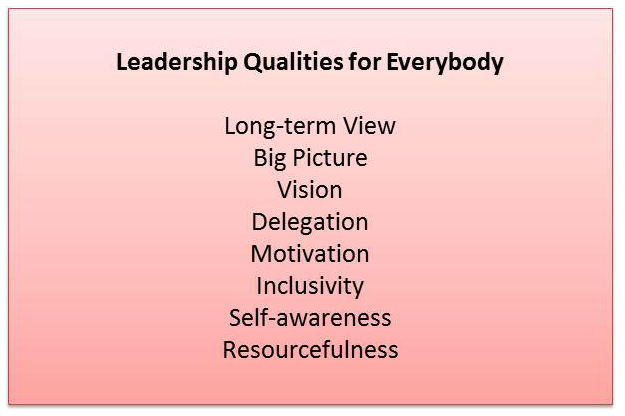
LEADERSHIP QUALITIES FOR ALL
When Neil Armstrong’s foot dropped off the last step of the lunar module and onto the surface of the moon, he coined the famous phrase that his one small step was a giant leap for mankind. A single footstep had advanced human achievement. In the same way, any one person involved in your entire enterprise can move it forward exponentially. Identifying those individuals and choosing the right steps is essential to moving your organization forward.
An entire team of unseen people stood behind Armstrong. Besides his family and friends, Armstrong relied on a close partnership with colleagues at NASA. That NASA A-team, in turn, was building on the expertise and achievements of many others who preceded them. Armstrong stood on the shoulders of giants long before he took his one small step. Getting to the small steps in your organization—those instances that are, indeed, watershed moments of success—in the only way possible: by creating teams of giants and envisioning bold goals and achieving unimaginable results, one person, one step at a time.
One person, one action has organization-wide value. This was true when the classic total systems thinkers were leading business into a new era of global competition, and it is truer now. The first step to unleashing the potential of individuals to improve your total organization is to get some concept of your enterprise as a working system, a total system.
Leaders who are able to transform enterprises into rapidly responsive and adaptable groups tend to share similar qualities. Now everybody in the organization needs to foster the same attributes. These qualities, summarized below, have great impact on bottom-line success. How? Through the bonds they create among everyone involved in your business. By fostering these collaborative bonds, leaders have access to all the best each person has to offer.
Experts agree that there are a few fundamental characteristics of successful leaders. These qualities are desirable in all employees and in others who are in a position to help your business. These key attributes should no longer be reserved for official leaders.
Leaders take a long-term view. Certainly, from time to time they may set aside a grander view to complete a project on time and on budget. Largely, however, leaders balance schedule and quality with people’s needs. They understand how retention and engagement serve the organization as well as its employees.
Leaders see the big picture. They grasp how actions by one can affect many others. They also inspire others to think beyond their current domain of responsibility and gain a working knowledge of the greater system in which they work. This way, leaders inspire the leadership mindset in others.
Leaders provide vision to unify people’s energy and to inspire their actions. By being consistent, they also help align all work decisions. A clear vision permits people to act innovatively, because they have aligned their view and goals with the larger system.
Leaders delegate, but they don’t stop there. They also provide support and necessary resources while avoiding micromanaging and abandonment. Among colleagues, the person with leadership qualities is supportive and encourages bold, reasoned choices and actions.
Leaders motivate; they rally emotional energy in teams. They motivate through personal connection and through sharing the image of a total system. They understand that emotional energy can be fueled by vision and clarity.
Leaders are inclusive. They engage diverse interests and activities by establishing goals and fostering a shared awareness. Here, their work is like that of the conductor of an orchestra, including an appreciation for the social aspect of a group endeavor.
Leaders are self-aware. They have a keen sense of their greatest strengths and growth opportunities, and they continuously work for personal and professional improvement. Also, to increase their self-awareness, they consistently seek feedback from those around them.
Leaders are resourceful; they know their system. They are skilled at maneuvering around yet complying with policies and procedures. They don’t give up until the right thing is done right.
These qualities in people who have some stake in your organization can lead to a surge in innovations and solutions—a lineup of expert support worth encouraging. As a first step, I suggest getting a grip on your total system and beginning to understand the unique human factor that is changing even the classical solutions for organizational growth and change.
Make it everybody’s business to know and grow your enterprise.


